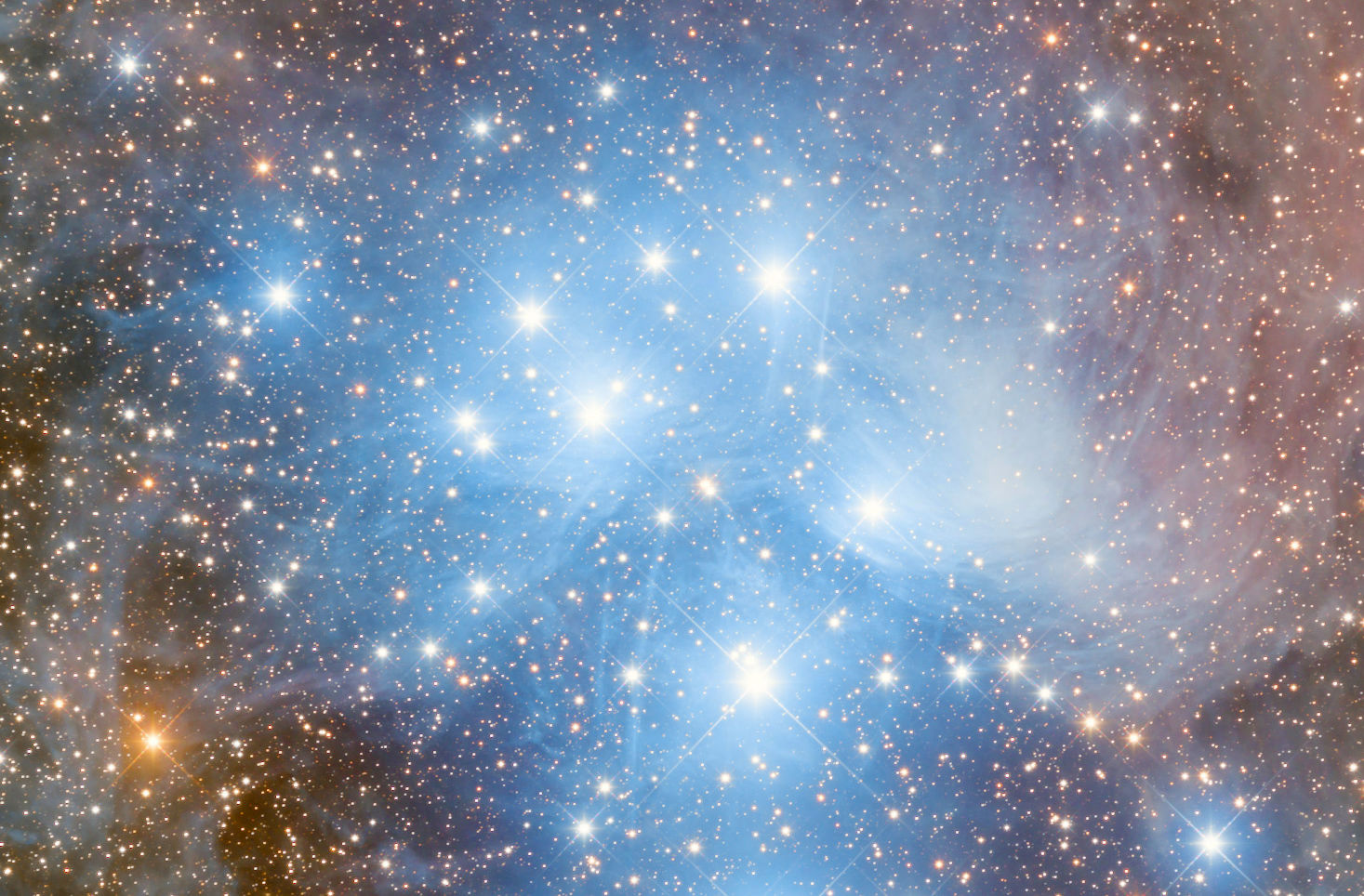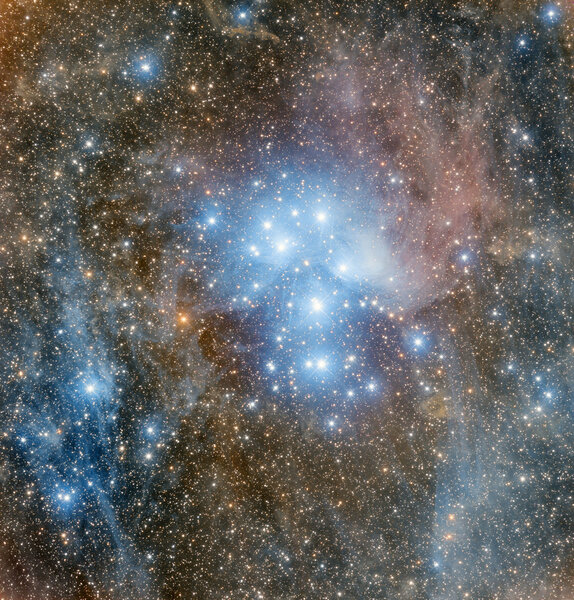Create a free profile to get unlimited access to exclusive videos, sweepstakes, and more!
The Pleiades like you've never seen them before

The other night I was getting ready for bed and walked over to close the shade on a window that faces east. And there, rising over the horizon, was the magnificence that is Orion, its seven bright and iconic stars able to pierce through the backlighting in the glass.
I could also see a few other canonically winter stars (sorry southern hemisphereans) like Procyon, Sirius, and Aldebaran.
And there in the sky, higher up, was a small knot of stars that I could barely see. But that’s only because of all the light I was immersed in; had I been outside, or even better at a dark site, I would've been able to see them much more clearly: The Pleaides.
This small clump of stars is a true open cluster: a group of stars born and traveling through space together. At a distance of 445 light years, it's close enough that even by eye we can separate out the brightest of the 1,500 stars in the cluster.
It would be lovely enough if it were alone in space, but it’s not: It happens to be plowing through a region of dusty clouds in the galaxy, and the stars in the Pleaides are lighting up the dust. And this makes for a really, seriously gorgeous scene that our puny eyes don't have a prayer of seeing… unless someone makes a deep telescopic image of the view.
Hey, you're in luck:
My friend Adam Block took this using an 18-centimeter 'scope designed to take deep, wide-field images, and holy cow does it deliver!
Dust is made up of teeny grains of either rocky or carbonaceous material, and is strewn throughout space, though denser in some regions than others. Here, the dust is all through the image, forming wisps and patches. The stuff coincidentally near the brightest stars in the cluster shines blue, both because the brightest stars are blue, and because dust scatters blue light far more efficiently than red. Blue light from the stars that starts off heading in a different direction gets bounced toward us, while redder light passes though, making the dust appear blue.
Farther out from the stars the dust appears red or even brown, because it allows red light from behind it to pass right through to us, but sends the blue light off in a different directions. Without a strong source of light (just the collected light from background stars), that changes the overall color of the clouds. I’ll note in the upper right some of the material looks pinker, so I suspect there's thin hydrogen gas there, which glows characteristically red when excited by the light of bright stars.
This is one of the most spectacular images I have ever seen of this cluster! You really gets a sense of chaos going on out there, with newborn stars and gas and dust all going this way and that.
Despite being the nearest young open cluster to us, there are still lots of things we don't know about the Pleiades. I was hoping that the European Space Agency’s Gaia satellite would answer most of our questions; it's designed to very accurately measure the positions, motions, colors, and distances of over a billion stars. When the data came back for the Pleiades, they showed the overall cluster shape may be elongated, like an American football with the end pointed at us, but it's not clear if this is a real shape or if it's due to some issues with the way the Gaia detectors worked. The brightest stars all appear to be on the near side of the cluster, too, which makes me suspicious there are still issues with how it finds the distances to very bright stars.
I wrote an article about this at the time, and I'm still hoping that with the next release of Gaia data it'll clear all this up. The Pleiades are such an icon in the sky, visible to the naked eye, lovely through binoculars, gorgeous through a telescope, and simply jaw-dropping in deep images. And they're an icon of science, used as a proxy to understand how more distant clusters of stars are born and change over time.
They are beautiful both scientifically and artistically, and I want to find out as much about them as I can. Hopefully soon we'll know them much better.




























